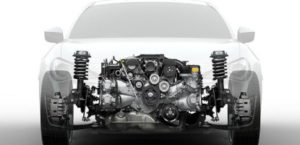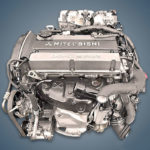The 1.8-liter Mitsubishi 4G62 (or G62B) gasoline engine was produced from 1979 to 1989 and was installed on such popular concern models as the Lancer, Galant, Cordia and Delica. Then this unit was installed on Hyundai cars for almost ten years.
The 4G6 family also includes engines: 4G61, 4G63, 4G63T, 4G64, 4G67 and 4G69.
The engine was installed on:
- Mitsubishi Cordia A210 in 1982 – 1989;
- Mitsubishi Chariot D03 in 1983 – 1987;
- Mitsubishi Delica II in 1979 – 1986;
- Mitsubishi Galant E10 in 1983 – 1988;
- Mitsubishi Lancer A170 in 1979 – 1987;
- Mitsubishi Tredia A210 in 1982 – 1989;
- Hyundai Lantra 1 (J1) in 1993 – 1995;
- Hyundai Sonata 2 (Y2) in 1988 – 1993; Sonata 3 (Y3) in 1993 – 1998.
Specifications
| Production years | 1979-1989 |
| Displacement, cc | 1795 |
| Fuel system | carburetor (Carburetor SOHC) injector (MPFI SOHC) single injection (4G62T ECI TURBO) |
| Power output, hp | 85 – 100 (Carburetor SOHC) 90 – 110 (MPFI SOHC) 135 – 160 (4G62T ECI TURBO) |
| Torque output, Nm | 135 – 145 (Carburetor SOHC) 140 – 150 (MPFI SOHC) 200 – 220 (4G62T ECI TURBO) |
| Cylinder block | cast iron R4 |
| Block head | aluminum 8v |
| Cylinder bore, mm | 80.6 |
| Piston stroke, mm | 88 |
| Compression ratio | 8.5 (Carburetor SOHC) 8.8 (MPFI SOHC) 8.0 (4G62T ECI TURBO) |
| Features | no |
| Hydraulic lifters | yes |
| Timing drive | belt |
| Phase regulator | no |
| Turbocharging | no (Carburetor SOHC) no (MPFI SOHC) TC05-12A (4G62T ECI TURBO) |
| Recommended engine oil | 5W-30 |
| Engine oil capacity, liter | 4.0 |
| Fuel type | petrol |
| Euro standards | EURO 1 (Carburetor SOHC) EURO 2 (MPFI SOHC) EURO 2 (4G62T ECI TURBO) |
| Fuel consumption, L/100 km (for Mitsubishi Lancer 1985) — city — highway — combined |
10.9 6.5 8.4 |
| Engine lifespan, km | ~250 000 |
| Weight, kg | 160 |
Disadvantages of the Mitsubishi 4G62 engine
- The main problems are caused by unreliable belts and especially balance shaft belts;
- Low-quality or old oil here quickly disables hydraulic lifters;
- The cause of floating engine speeds is usually a dirty throttle or idle speed controller;
- The culprit of the vibrations of the power unit is most often the destruction of its pillows;
- There are a lot of complaints on specialized forums about cracks in the intake and exhaust manifolds.






